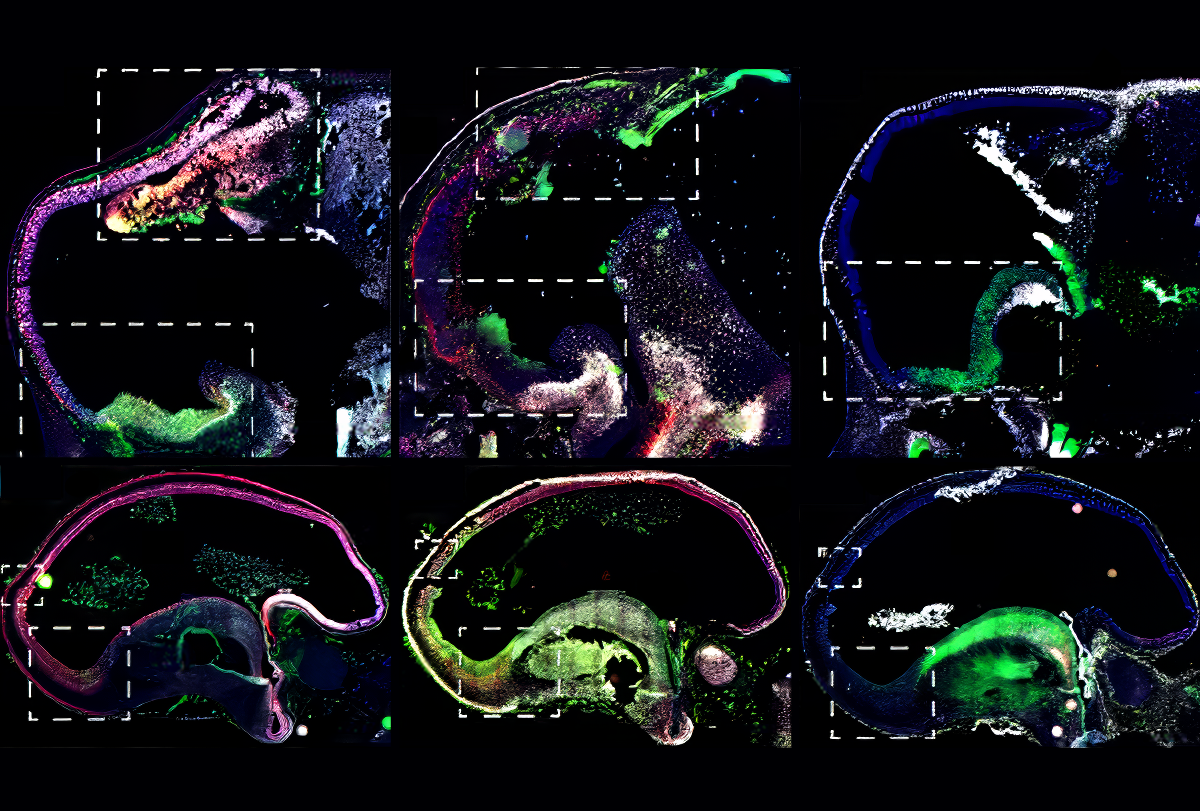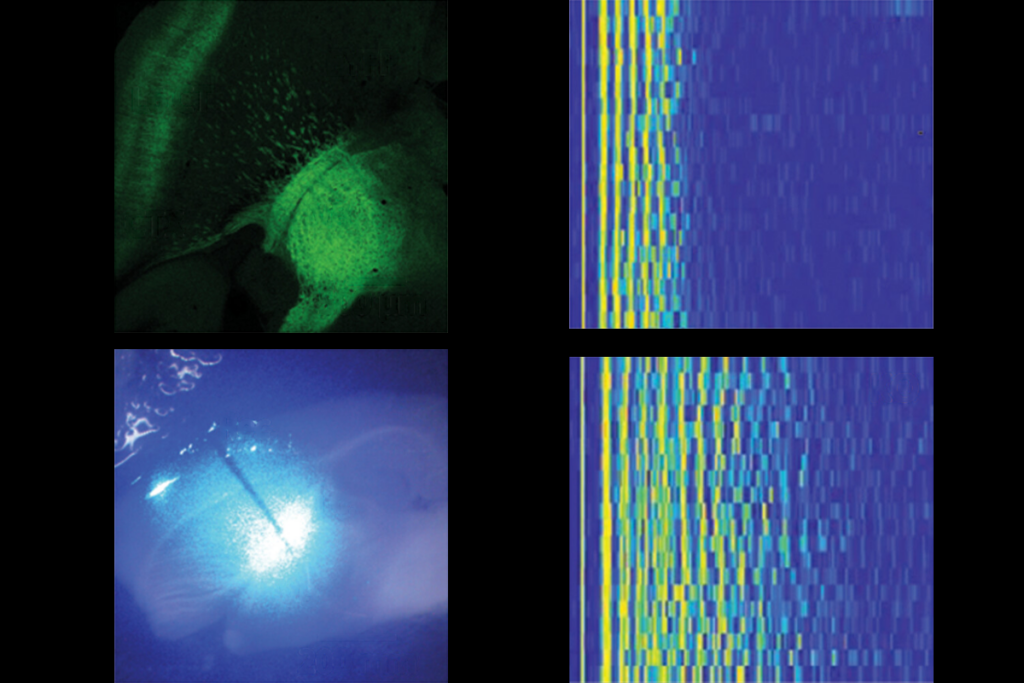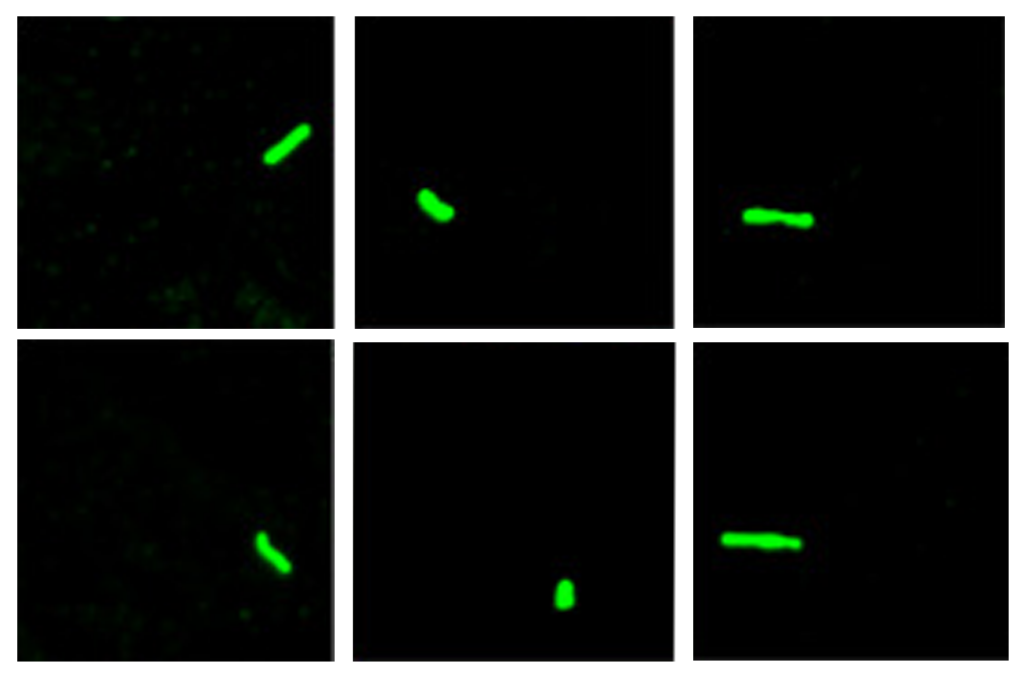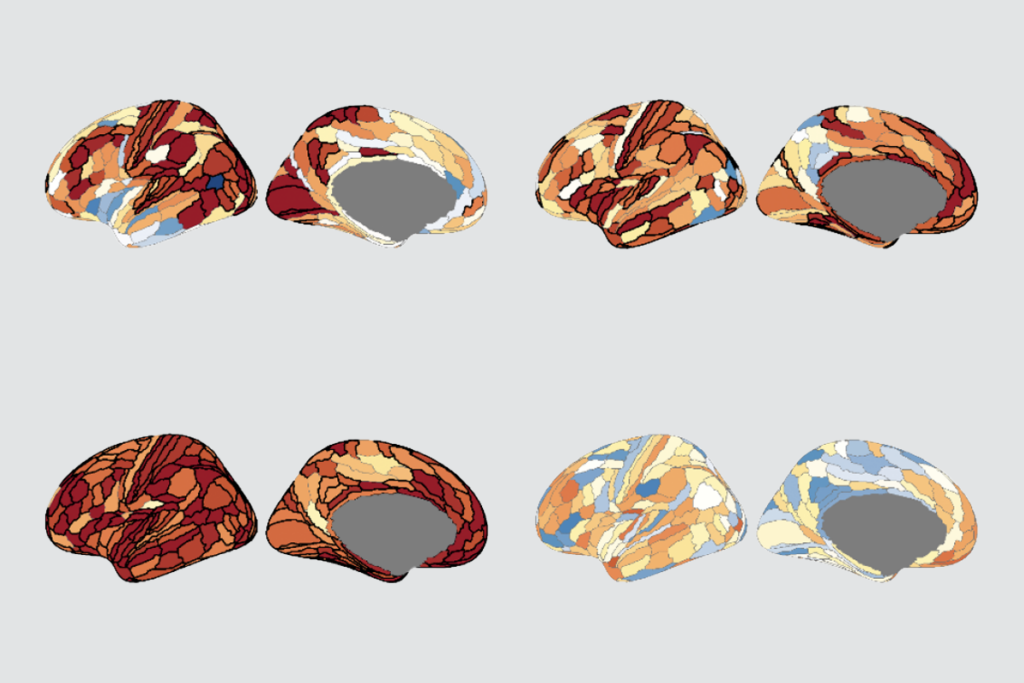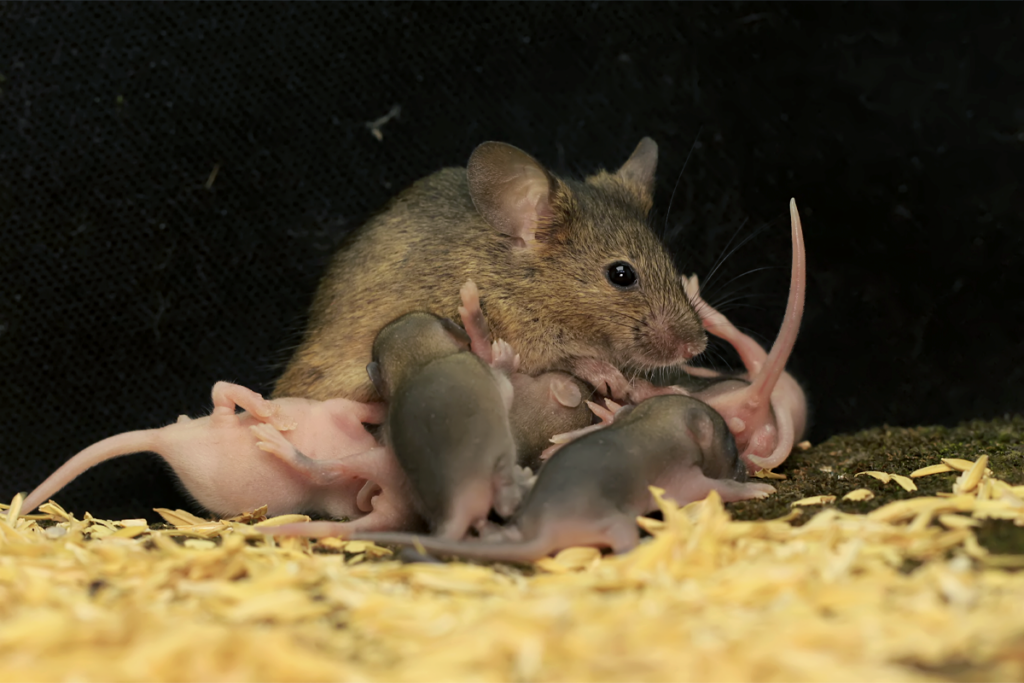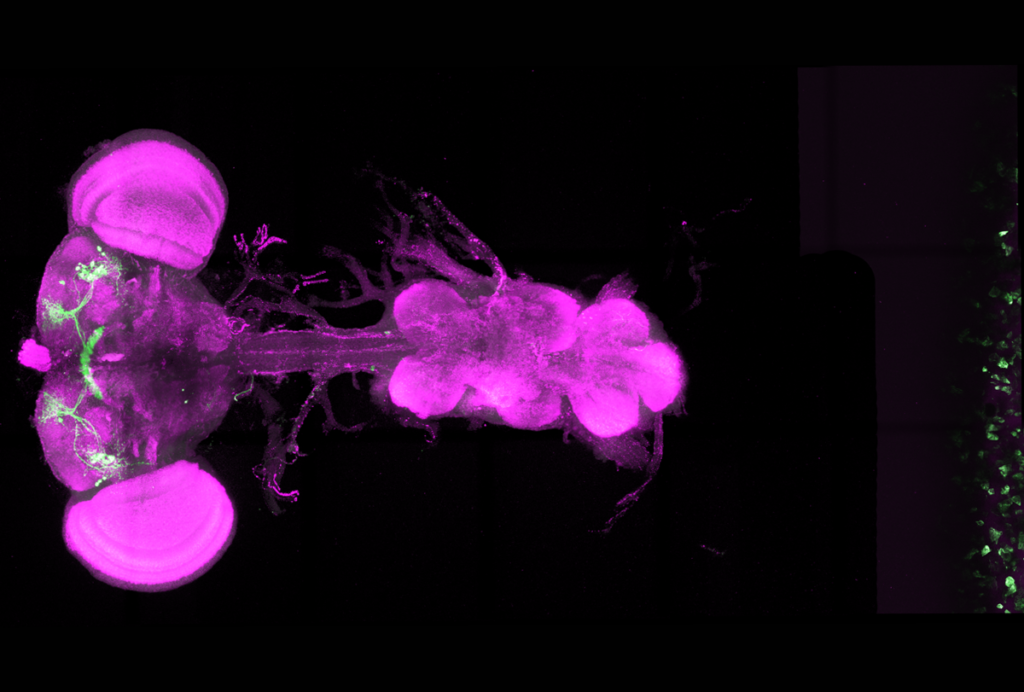Genes tied to a variety of brain conditions, including microcephaly, autism and schizophrenia, are expressed in organizers—regions that govern how neural stem cells evolve and differentiate into diverse cell types, according to a new preprint.
The findings suggest the molecular basis for the conditions might emerge within the first few months post-conception—earlier than previously thought.
Processes occurring before or shortly after birth are thought to underlie several brain-related conditions. Many autism-linked genes, for instance, are expressed during mid-fetal development, research has shown.
Those first months after sperm and egg meet remain relatively unexplored, however. Generally, researchers examine the role of genes linked to brain conditions later in development, says Nicola Micali, associate research scientist in Pasko Rakic’s lab at Yale University, who co-led the new research.
“That’s when we have the samples,” he says. “It’s very difficult to have access to early time points in humans.”
In a previous study, Micali and his colleagues examined the development of the macaque brain from embryonic day 37 to 110, finding that genes tied to neurodevelopmental conditions are expressed in brain organizers, also known as patterning centers, which emerge around 6 weeks post-conception in the animals.
In the recent preprint, posted to bioRxiv in June, Micali and his colleagues turned their attention to cultured human neural stem cells that mimic the foundational phases of brain development. By tracking gene expression over time, they identified when genes linked to 25 conditions are expressed.
Genes implicated in brain patterning are frequently deregulated among neural stem cells derived from autistic people, the study shows, suggesting that alterations in this process may contribute to autism, the researchers say.
T
he new work sheds light on an important and under-investigated area of research—that is, what the origins of different stem cell populations are and whether they may be implicated in neuropsychiatric conditions, says Anthony Wynshaw-Boris, professor of genetics and genome sciences at Case Western Reserve University, who was not involved in the study.“I can’t stress enough, this is a time of development that is very hard to study [in humans]—I would say impossible.” Given the obstacles, Wynshaw-Boris says he was excited to read about the team’s approach to recapitulating early brain development in a dish and pleased to see that the researchers backed up their findings with analyses of existing datasets from mice, macaques and people.
“I think that’s a good way to go,” he says.
In the recent preprint, Micali and his colleagues compiled a list of 2,842 genes tied to malformations of cortical development, such as microcephaly, hydrocephaly and focal cortical dysplasia, as well as autism and other conditions such as schizophrenia, ADHD and major depressive disorder. They then tracked the expression of these genes in cultured neural stem cells that recapitulate different phases of cortical development.
Genes associated with distinct conditions show different expression patterns over time, the researchers found. For instance, genes associated with microcephaly are largely expressed as the neural stem cells proliferate, whereas genes linked to focal cortical dysplasia and autism are expressed to a high degree later.
Assessing the average peak expression of the genes hinted at phases of development that may be particularly vulnerable to genetic alterations. Comparing findings from a previous study on neural stem cells with existing data from the brains of mice and macaques revealed that some of the genes are preferentially expressed in organizers in the dorsal telencephalon, which give rise to excitatory neuronal lineages. Others are mostly expressed in organizers in the anteroventral telencephalon, which forms inhibitory neurons.
How alterations in the genes might affect downstream brain development is a question that remains to be explored, says Arnold Kriegstein, professor of neurology at the University of California, San Francisco, who was not involved in the study.
The new findings lay the groundwork for exploring that question in different conditions, he adds.
I
n another analysis described in the preprint, Micali and his colleagues examined how genes associated with distinct conditions interact.Some 31 regulatory networks are tied to specific conditions and 60 regulatory networks are potentially involved in early brain development, the investigators found.
Regulatory networks are shared by multiple conditions, the analysis showed. A single transcription factor can have different roles during development, serving a core function in one regulatory network and a peripheral role in another.
In addition, the loss of transcription factors has different effects in distinct cell states, computer simulations of these disruptions revealed. This suggests the timing of a disruption to gene expression may modify its impact.
Together, these findings may help explain why similar characteristics are seen in different conditions, and why people with the same genetic alteration may have different characteristics, the researchers say.
Finally, an analysis of gene expression data from neural stem cells and organoids derived from people with and without autism provided more insight into intrinsic genetic variation’s effects on early brain development.
Although gene-expression patterns differ from person to person, genes involved in brain patterning—such as FOXG1, MEIS2, POU3F2 and FEZF2—are either upregulated or downregulated in all neural stem cell lines and organoids derived from people with autism, the researchers say.
These findings jibe with previous research that shows genes involved in cortical patterning are differentially expressed in postmortem brain tissue from people with autism.
Although the results are intriguing, changes in brain patterning would likely have major impacts on later development, according to Kriegstein. “That may well be true for the major cortical malformations but seems less likely to explain the more subtle diseases like depression or autism,” he says.
Kriegstein also points out that genes expressed in early development may be expressed again at later stages. Just because genes are expressed in early development doesn’t necessarily mean that expression is linked to a condition, he says.
Still, Kriegstein says he thinks the work opens new avenues of exploration. Researchers could use the in vitro system to investigate the functional impact of the genetic disruptions simulated in the preprint, which may provide stronger evidence linking gene expression to the ultimate manifestation of a condition.
Micali and his colleagues are already working on this next step. Ultimately, Micali says, he envisions producing more donor-derived neural stem cell lines to better understand the specific processes that underlie brain conditions at an individual level.
Gene-expression data from the experiments conducted in the preprint can be explored online.
